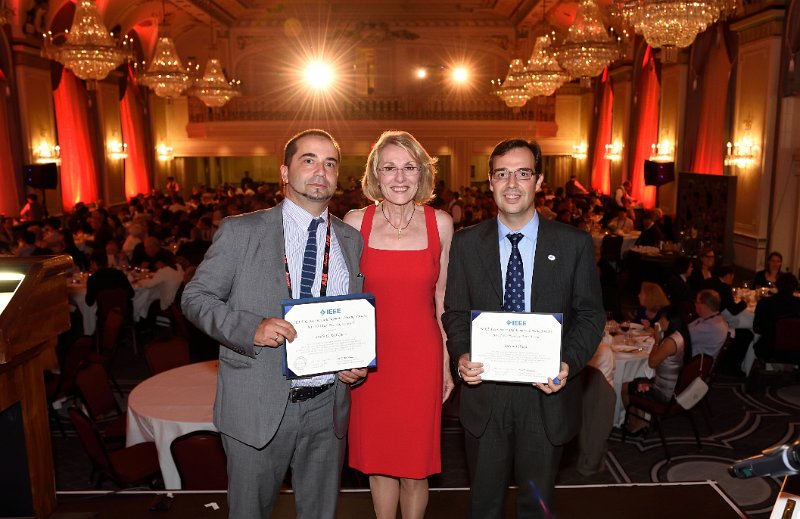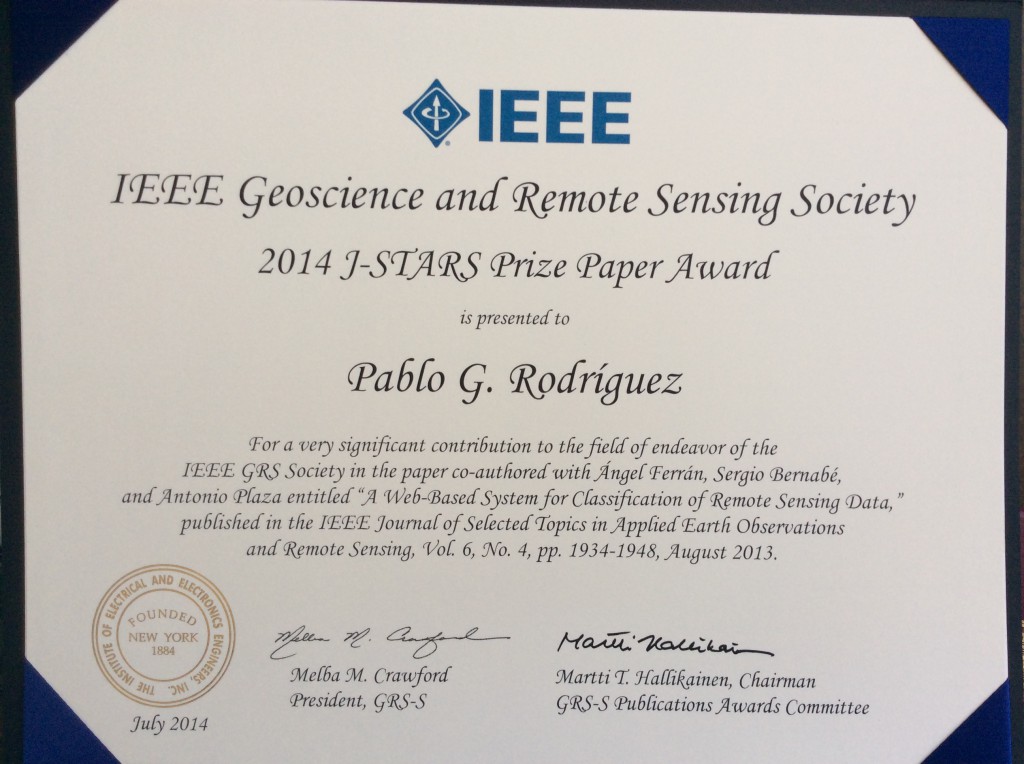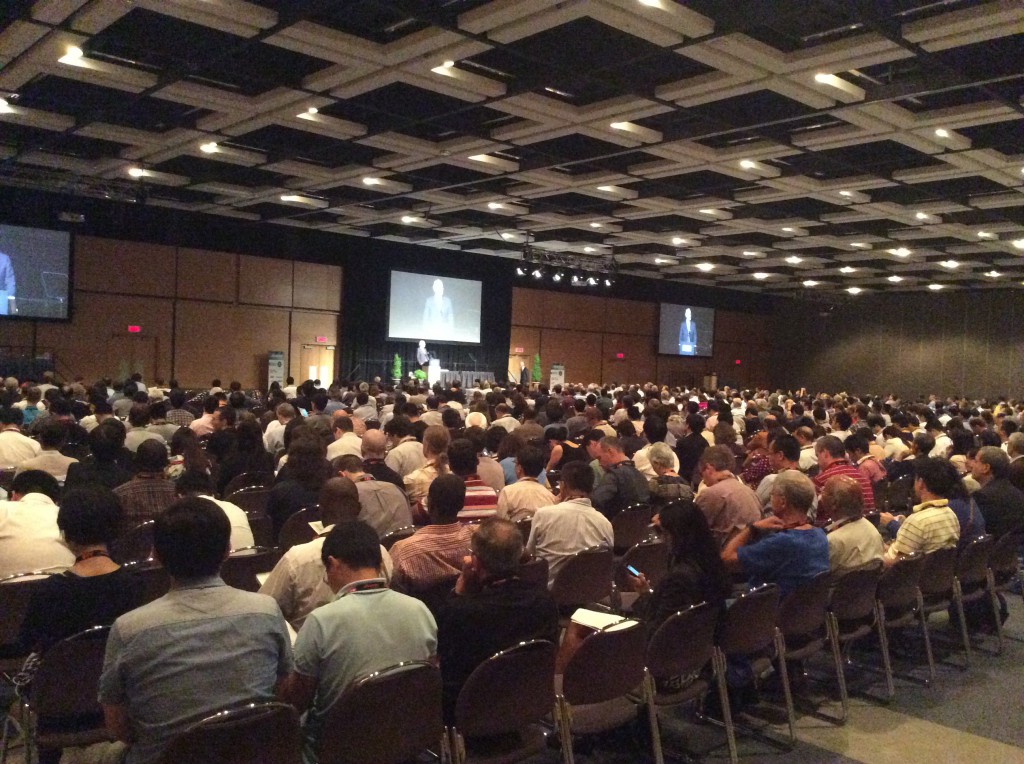The article titled «A Web-Based System for Classification of Remote Sensing Data» whose authors are Ángel Ferrán, Sergio Bernabé, Pablo García Rodríguez and Antonio Plaza (members of research groups «Hiperspectral Computing – HyperComp» e «Media Engineering Group» on University of Extremadura) has been distinguished with the award for best scientific paper in 2013 in the journal IEEE Journal of Selected Topics in Applied Earth Observations and Remote Sensing (JSTARS).
Picking up the award with Antonio Plaza and Melba Crawford (President of IEEE Geoscience and Remote Sensing Society):
Just before collecting diplomas:
Here the distinction, this is the paper for one of 4 authors:
The salon dinner in the castle:
Before starting dinner, when we were sitting:
The performance after dinner:
In cocktail before dinner in one of the halls of the castle:
In the next picture we can see the castle hotel in Quebec (Canada):
The Exhibition Room in the IGARSS meeting in the middle of the presentations:
We arrived in Quebec (Canada) through Philadelphia:
In the next entry of this blog we will see photos of a visit to the St. Lawrence River to see whales in freedom:
NOTE: Sergio Bernabé is not working now at the University of Extremadura. Currently he is working in Lisbon (Portugal) with a contract as a researcher at the Institute of Telecommunications (www.it.pt) of the Instituto Superior Técnico thanks to José Nascimento.
Acknowledgements:
«The work of the award was supported by the computing facilities of Extremadura Research Centre for Advanced Technologies (CETA-CIEMAT), funded by the European Regional Development Fund (ERDF). CETA-CIEMAT belongs to CIEMAT and the Government of Spain.»
In the Ceta-Ciemat web (also in Spanish):











